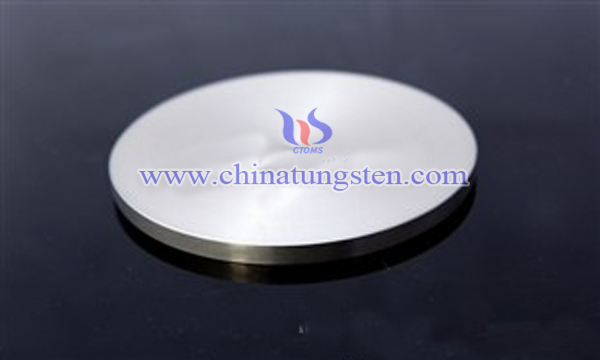Tungsten Titanium Alloy Target Material Manufacturing Process
- Details
- Category: Tungsten Information
- Published on Wednesday, 06 June 2018 15:02
Tungsten has high altitude, high corrosion resistance and excellent surface adhesion, which makes tungsten titanium (W-Ti) an ideal solution to prevent the dense layer of the diffusion of foreign atoms. In the metallizing process of semiconductor chip, the tungsten titanium alloy containing 10wt% titanium is often used as a diffusion barrier and bonding layer to separate semiconductors and metallized layers, such as aluminum and silicon or copper and silicon.

In the flexible thin film solar cell (CIGS), the tungsten and titanium barrier can prevent the diffusion of iron atoms in the steel matrix through the molybdenum back contact to the CIGS semiconductor, and significantly reduce the efficiency of the CIGS solar cells. The tungsten titanium barrier is mainly obtained by magnetron sputtering, which requires tungsten titanium alloy target with high density, high purity and uniform structure. High density and high purity are the important performance requirements of tungsten titanium alloy targets, which can effectively reduce the formation of particles in the sputtering process, and help to obtain high quality W-Ti film barrier. The uniform structure can effectively prevent the formation of nodules on the surface of W-Ti alloy targets during sputtering and improve target utilization and film quality.
The W-Ti alloy target is mainly produced by powder metallurgy process. The preparation methods of tungsten titanium alloy target are as follows:
(1) W powder with purity of 99.95%, the particle size of 3.5μm and 99.9% purity, the particle size of -325 mesh (less than 45μm) are used as raw materials, the mass percentage of TiH2 powder is 11%, and the mass percentage of W powder is 89%. Two kinds of raw materials are put into the tank of the mixer, and the mixing tank is mixed with the mixing time for 16h and the mixture of W-TiH2 powder is obtained by pumping argon gas into the tank.
(2) The mixed W-TiH2 powder was put into the mould, and the W-TiH2 billet was obtained by cold isostatic pressing, the pressure was 150MPa and the holding time was 15min.
(3) The W-TiH2 billet was pre calcined and reduced in a flowing hydrogen gas sintering furnace. The precalcining temperature was 1100°C and the heat preservation time is 4h. So the precalcined billet was obtained.
(4) The preburned blank is sintered in vacuum at high temperature, the vacuum degree of vacuum furnace is 1 x 10- 3Pa, the sintering temperature is 1600°C, and the heat preservation time is 3h, and the sintering blank is obtained. The density of the sintering blank is 94%.
(5) The sintering billet is reshaped, and the titanium plate is used as the wrapping material to carry out the package process.
(6) The blanks are rolled and heated in the atmosphere. The heating temperature (the first heating temperature) is 1300°C, and the heat preservation time is 60 minutes. One pass is rolled every time. The temperature of each pass is 100°C, and the amount of the pass deformation is 20%, and a total of 4 passes are rolled.
(7) The outer coating material machine of the rolling blank is processed and removed, then the heat treatment is put into the vacuum heating furnace. The heat treatment temperature is 800°C, the heat preservation is 2h, and the tungsten titanium alloy target is obtained.
(8) The heat treatment billet is machined by milling and grinding, the finished product is made of tungsten titanium alloy target with a size of 10 x 160 x 800mm.
The density of W-Ti alloy target produced by these steps can reach more than 99.6%, the thickness of the target is controllable, and the alloy target with larger size can be prepared, and the target materials have no cracking and delamination defects, and the process is simple and suitable for large batch industrial production.
- Tungsten Manufacturer & Supplier, Chinatungsten Online: www.chinatungsten.com
- Tungsten News & Prices of China Tungsten Industry Association: www.ctia.com.cn
- Molybdenum News & Price: news.molybdenum.com.cn
- Tel.: 86 592 5129696; Fax: 86 592 5129797; Email: sales@chinatungsten.com



 sales@chinatungsten.com
sales@chinatungsten.com